The park is kind of a funny shape... with the top half being surrounded by Buffalo Gap National Grassland and the lower half resting squarely in the Pine Ridge Reservation (Native American land... which non-natives like us can't enter without a special permit).

So, why are these lands "bad?" The region got its name from early French trappers since it was so difficult to cross. It is indeed a very harsh environment filled with extremes... from searing heat to chilling winters, from cracking drought to flash floods. And as diverse as the land, so are people's opinions of it.
The national park, which protects almost 250,000 acres, was first made a national monument in 1939. It wasn't until 1978 that it was redesignated as a national park.
We entered from the north and first went to the right, which was the unpaved Sage Creek Rim Road. There weren't a lot of cars out this way and almost immediately we saw a variety of animals and incredible views. The clouds had also moved in to add to the scenery.
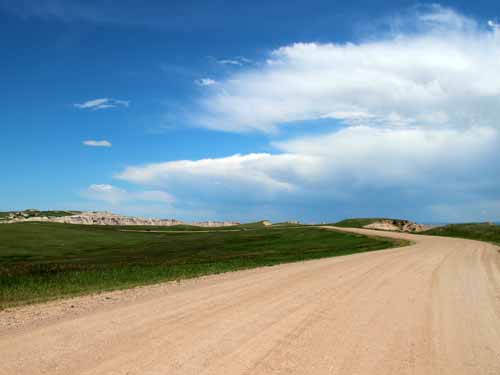
Fortunately the road was well-maintained.
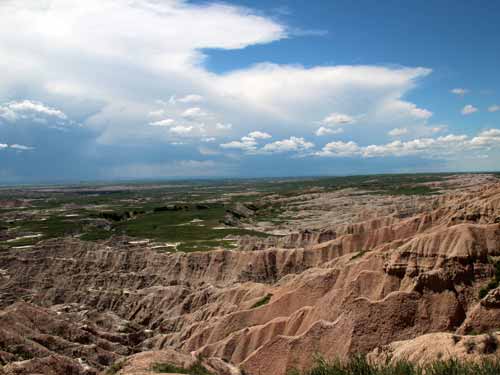
The view from Hay Butte Overlook
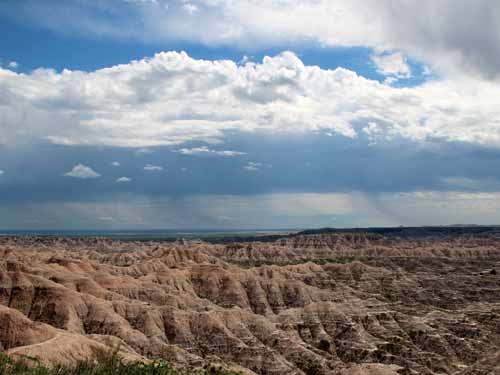
Distant rain storms
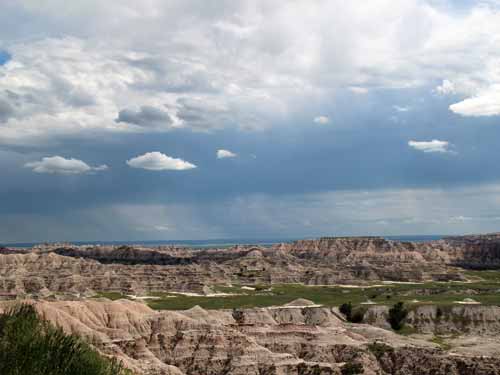
At Wilderness Overlook
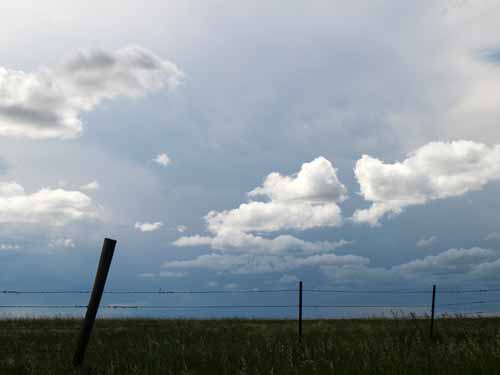

A small herd of pronghorn
"Oh give me a home, where the buffalo roam, where the deer and the antelope play" ... yup, they mean this guy.
The Pronghorn is the only surviving member of the family Antilocapridae and is found nowhere else in the world. While often called the Pronghorn Antelope, it is not a true antelope. It is a unique animal with no close relatives.
It is the fastest land mammal in North America (up to 60 mph), and the second fastest in the world (second only to the cheetah). However, they are very poor jumpers and prefer to crawl under fences instead of going over them. They can detect movement up to 3 miles away and have a 320 degree field of vision.
Pronghorn live exclusively on the Great Plains. While their numbers have dropped, they are not currently endangered. Since they eat poisonous plants such as larkspur and locoweed, many cattle ranchers encourage them to graze their rangeland in order to reduce these undesirable plant species.

All pronghorn have black horn sheaths, but those of the males are larger with side prongs. Horn sheaths are different from both deer antlers and true cow horns. Antlers are made of bone and shed annually; true horns are made of compressed hair and never shed. Horn sheaths are a bit of both... made of keratin growing on a bony core and shed annually.

Bighorn Sheep are best known for their large curled horns and fierce head-on fights. Only the rams (males) get the huge horns that can weigh up to 30 pounds. Ewes (females) have shorter horns that never exceed half a curl.

From afar, grass is just grass... but there are actually many different types.


Flowers can also be found, such as this Copper Mallow (also known as Cowboy's Delight).
Eventually we arrived to a small herd of bison near Robert's Prairie Dog Town. Bison were reintroduced to the Sage Creek area in 1964. Today, a herd of over 800 roam this section of the park.
Are they bison or buffalo? Early French settlers called them bison because they resembled the European Bison (or Wisent), but an English naturalist later described them as buffalo. Bison are not true buffalo, however, which include the African Cape Buffalo and the Asian Water Buffalo. Most scientists prefer using their scientific name (Bison bison), but a popular common name is American Buffalo.
Bison originally came to North America long ago across a land bridge from Asia. They lived mostly on the Great Plains in enormous herds. Today they only live in small numbers, protected in parks and reserves.


While these animals may look like big cuddly cows, they are very dangerous, and many people get hurt each year because they tried to pet one.

Coexisting peacefully with the prairie dogs.

A hoof print in the mud helps give an idea of size.
We went just a bit further to the Sage Creek Basin Overlook, then retraced our route back to the paved road to start exploring the other side of the park.

The overlook

The clouds were becoming thicker and the rain storms more abundant.
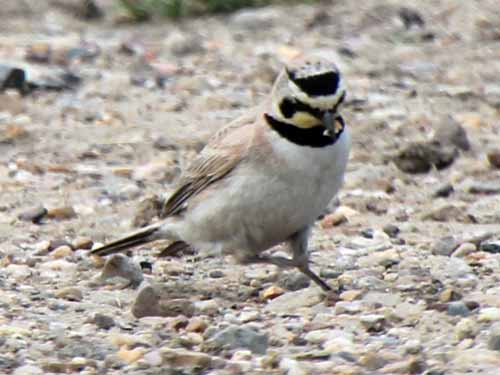
The Horned Lark is a ground-dwelling bird. Being the only true lark in North America, it has no competition from other larks.
There were many more cars and tourists on this paved portion of the park. We drove from overlook to overlook until eventually the heavy rain finally caught up to us.
Our first stop was the Pinnacles Overlook. Along with some spectacular views, we also saw some more bighorn sheep and heard wild turkeys gobbling in the distance.
37 million years ago, the core of the Black Hills to the west had already been exposed by erosion and they looked much as they do now. Streams flowing from them began to deposit sediments (mostly volcanic ash but also some gravel and rocks) into this area. The ash eventually weathered into clay and turned into rock. Only about half a million years ago did erosion start to dig down into these layers, creating the landscape we see today.

